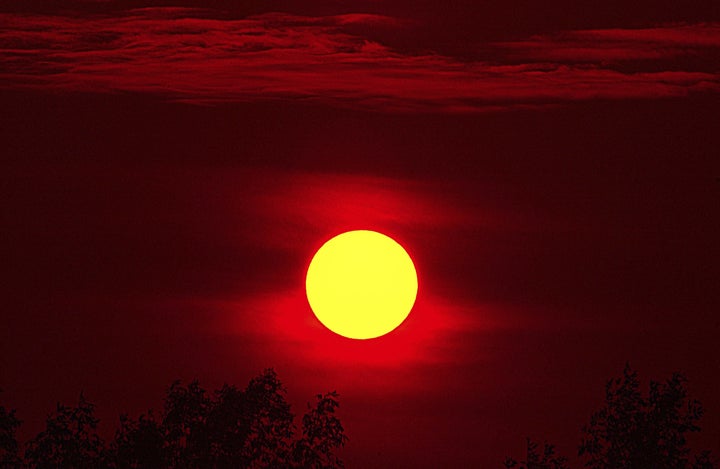
I thought of titling this post "Howl if You Love Jesus," although Cristina's Eisenberg's in depth survey of the effect of keystone predators on a wide variety of ecosystems, makes no mention of Jesus or of any religion. The Wolf's Tooth: Keystone Predators, Trophic Cascades, and Biodiversity is all about food webs. And I found myself thinking of Jesus saying to his disciples: Take, eat this is my body. If you think of the earth as the body of Christ, then all its members are important: the predator, the prey, the trees, the grasses, the birds, insects, fish, the forests, the rivers, the seas, and all their myriad forms of life.
A scientist with a poet's command of language, Cristina Eisenberg writes with precision and passion. Her own ongoing research focuses on wolves as keystone predators, what happens to various landscapes when wolves return in sufficient numbers to drive a trophic cascade. Wolves affect herbivores, for example elk, not only by limiting their numbers but also by causing them to be vigilant, thus changing their browsing patterns. When herbivores no longer over-browse, young trees can grow to maturity. When the forest and other plants are renewed, songbirds, butterflies, reptiles and amphibians return. Forested river banks hold their soil, preventing erosion and contributing to the health of rivers. The herbivore population also benefits, having a more reliable and renewable food source. Wolves are called keystone predators, because their presence or absence has a radical effect on a whole complex eco-system. When a system is healthy, biodiversity flourishes.
In "Part One: Web of Life," Eisenberg takes her reader on a breathtaking, sometimes heartbreaking tour of the planet from the Gulf of Maine to the Amazonian rain forests, the tropical coral reefs to old growth forests of the Northwest as well as rivers, lakes, and wetlands. At each stop she introduces us to the work of fellow scientists who are studying these ecosystems and the effects of disrupted food webs. As someone with no science background at all, I found the wealth of information not only accessible but riveting.
"Part Two: Mending the Web" surveys public policies and projects, both private and public, where keystone predators have returned or are being reintroduced. In this section Eisenberg also ponders the place of the human being, how to balance human uses of land and resources with the need to preserve wildness for our own health and the health of the whole planet. When too many species become extinct or compromised our own survival as a species is at stake, as we are being sharply reminded with the oil spill now threatening life in the marshes of Louisiana.
In order to survive in the wild where she works, Eisenberg herself has had to find her place, and learn to understand the language of wolves, grizzlies, and cougars and to defer to them when appropriate. As a species, we seem to have taken umbrage at the very idea of other predators who threaten us and our livelihoods. We have demonized them and many of us still seek to destroy them. In doing so, we have, perhaps unknowingly, perhaps with the best of intentions, caused harm to this sacred, beloved body of which we are all members.
Eisenberg quotes pioneer ecologist Aldo Leopold:
"One of the penalties of an ecological education is that one lives alone in a world of wounds. Much of the damage inflicted on land is quite invisible to the layman."
Eisenberg's powerful, beautifully written book, already in its second printing, has the potential to open many people's eyes, minds, and hearts.